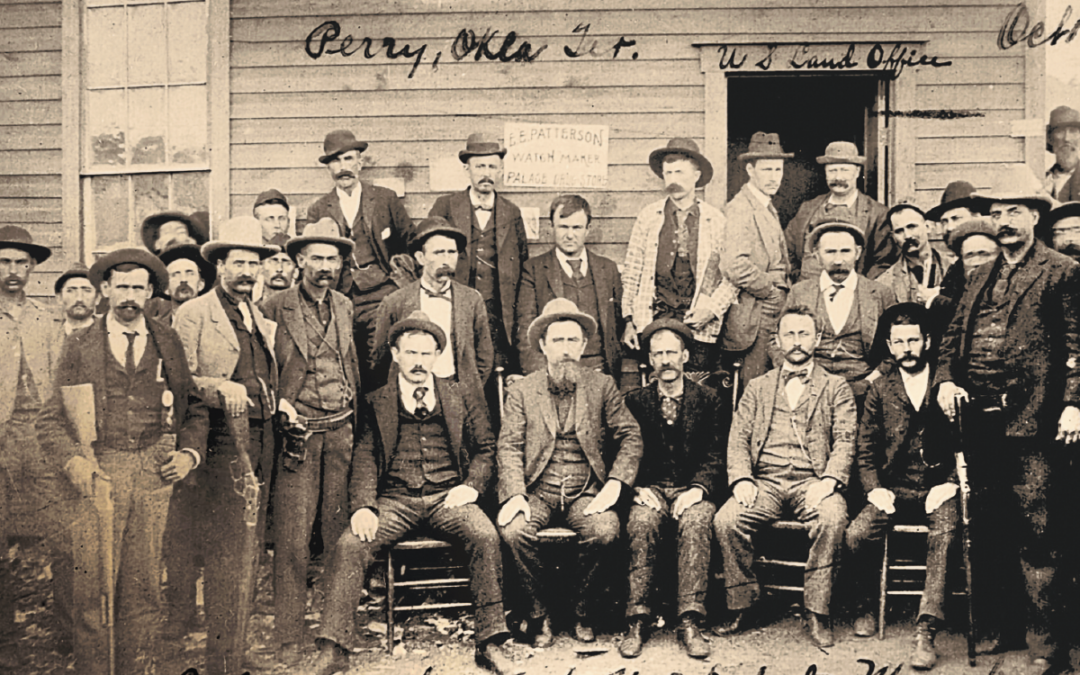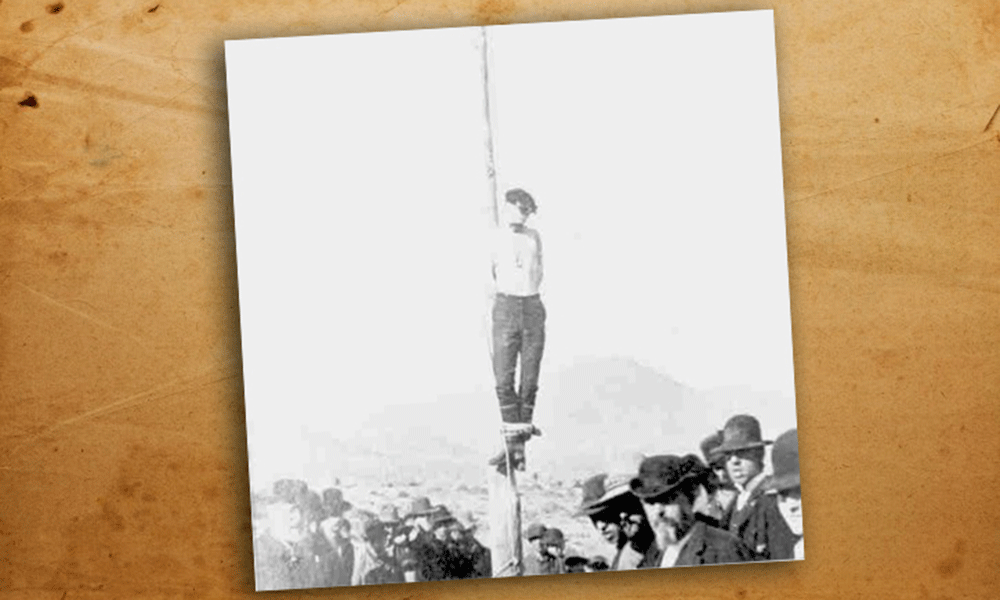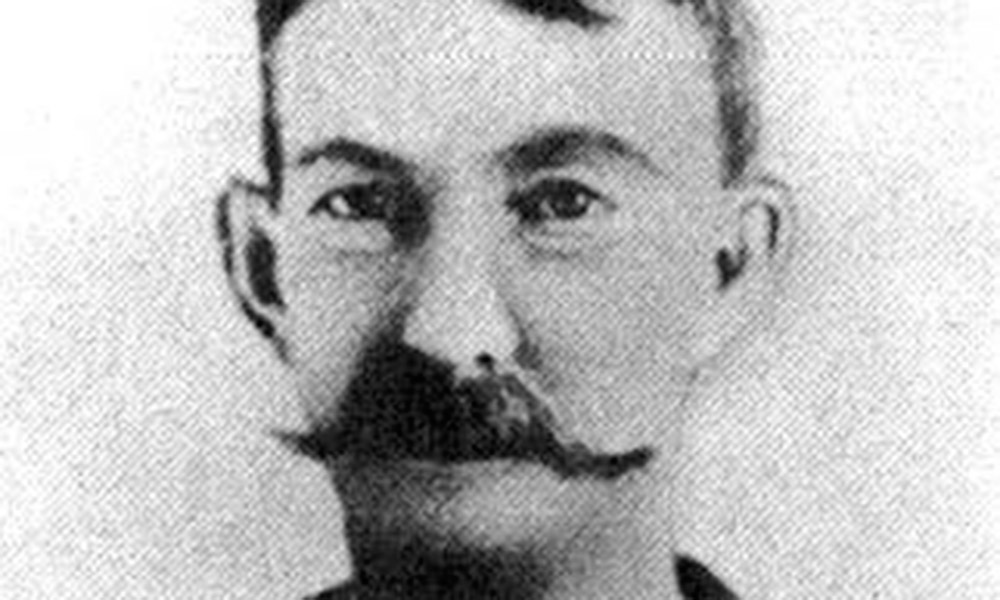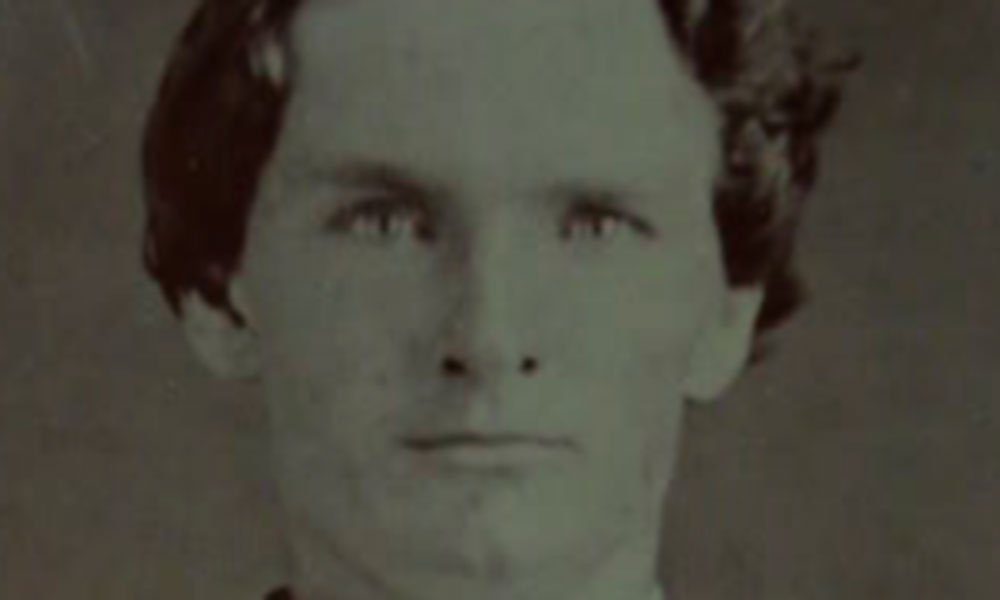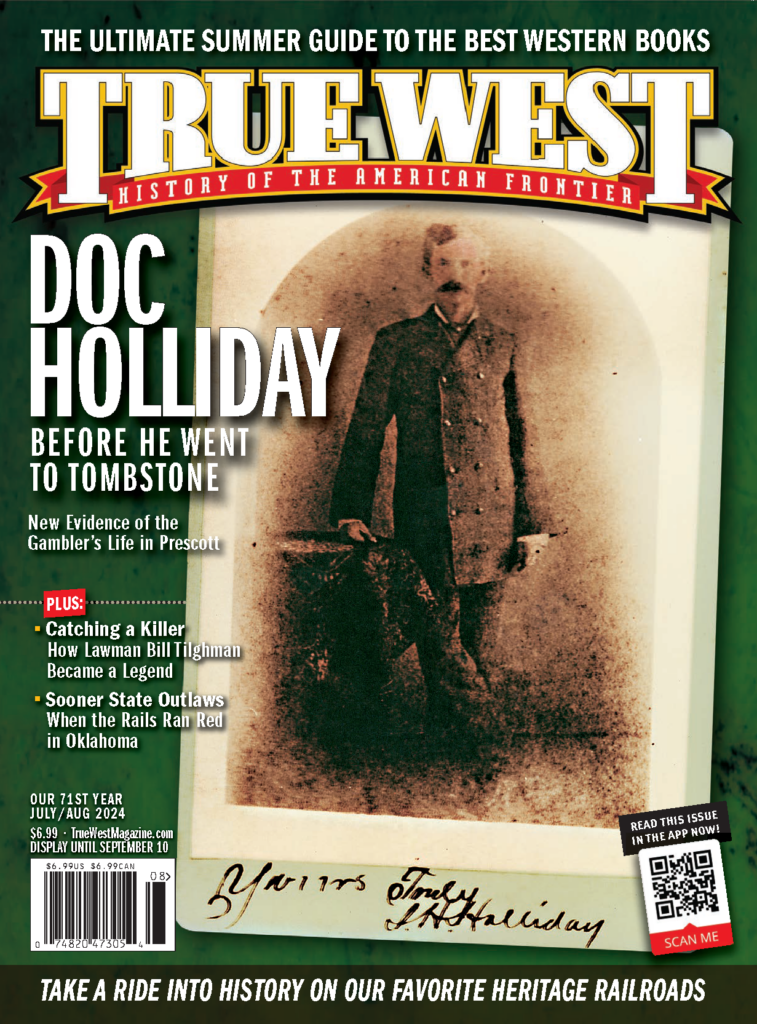How Bill Tilghman’s hunt for outlaw Bill Doolin made the Oklahoma lawman a legend.
When legendary lawman Bill Tilghman was killed in the line of duty in November 1924, his distraught wife, Zoe, was left with $80 and the monumental task of caring for their three sons alone. Inspired by the women who had penned books about their accomplished husbands, including Elizabeth Custer, who was married to Gen. George Armstrong Custer, and Jessie Benton Fremont, who was married to explorer John Fremont, Zoe hoped a book written about Tilghman would bring him the recognition she felt he deserved and provide necessary revenue.

According to Zoe, “My husband was one of the West’s greatest peace officers. He hunted down famous outlaws and killed when he had to. But Tilghman was more than an expert gunman who fought on the side of the law. He and other men who held dangerous jobs as sheriffs and marshals did the work of civilization along the whole frontier.”
Zoe was already a respected author who had written several published articles and poems for various magazines. Her first book, titled The Dugout, was about the life of early Oklahoma pioneers and was scheduled to be printed by Harlow’s Publishing Company, a subsidiary of the newspaper where she was employed, in the fall of 1924 after Tilghman was killed.
In early 1925, she persuaded Victor Harlow, the founder of the publishing firm, to invest in a manuscript based on the life and services of the slain marshal. She had no way of knowing the tragedies and trials she’d experience would keep her from completing the book until the late 1940s. The content of the book did not pose a difficulty. Bill Tilghman was a legend who had lived an adventurous life, but Zoe was dealing with the death of one of her sons and the arrest of another for murder.


The Man with the Star
William Matthew Tilghman was born on July 4, 1854, at Fort Dodge, Iowa. He entered the field of law enforcement in 1874 and remained in the profession for more than 50 years. He rode with well-known peace officers Wyatt Earp and Bat Masterson and was referred to by his closest lawmen friends as the “greatest of all of us.” Tilghman was celebrated by city officials and territorial politicians for his work. In 1905, he was honored by President Theodore Roosevelt for his dedication to law and order on the frontier. At a public tribute to the officer, the president remarked that Bill Tilghman was the kind of man who would “charge hell with a bucket.”
Among the many stories about the marshal included in Zoe’s work was the lawman’s capture of outlaw Bill Doolin.

Tilghman Tracks Down Doolin
In the summer of 1895, Tilghman learned that a man matching Bill Doolin’s description had been seen in a Kansas town east of Dodge City known as Burden. The deputy U.S. marshal traveled to the area and discreetly discovered that Doolin had visited Burden to buy supplies. Dressed as a tenant farmer, the outlaw drove a tired team and wagon to complete the disguise. When Tilghman found out the location of the farm where Doolin was staying, he made his way there. The house was next to a ravine surrounded by trees, and the lawman was able to observe the comings and goings undetected. “Necessity kept Doolin away from the secluded spot, but his wife and baby were inside,” Tilghman noted in his journal. The deputy U.S. marshal kept watch over the home and its inhabitants, waiting for the gang leader to appear. Doolin never showed, but his wife, Edith, eventually left the cabin with her bags and child in tow. Tilghman followed a safe distance behind her as she drove her wagon to the train depot in Burden. Mrs. Doolin purchased a ticket to Perry, Oklahoma, and sent a telegram to her father who lived near there, letting him know she was coming to visit.
Tilghman decided to check with the Burden postmaster to find out what mail, if any, Mrs. Doolin had received since she’d been in the Kansas town. Doolin hadn’t written to her at all but Mrs. Pierce, the owner of the hotel in Ingalls, corresponded frequently. Tilghman then took a trip to Ingalls to have a talk with Mrs. Pierce. The innkeeper was less than forthcoming about her association with the Doolins. It wasn’t until the lawman mentioned a train robbery in Texas and suggested the Doolin-Dalton Gang was responsible that Mrs. Pierce’s tongue loosened. In defending the Doolin-Dalton Gang and its leader, she let it slip that Doolin was in Eureka Springs, Arkansas, getting help for his rheumatism.
Armed with key information, Tilghman rode to Guthrie to report to Marshal Evett Dumas “E.D.” Nix. Nix knew Tilghman was anxious to be on his way to Arkansas and suggested the officer take other deputies with him to help capture Doolin. Nix reminded him of the outlaw’s threats to not be taken alive. Doolin had promised to kill any lawman who tried to arrest him as well. Tilghman assured the marshal he had a plan to get the job done alone.

When Bill Tilghman stepped off the train in Eureka Springs, he was dressed as an itinerant preacher complete with a long, black coat and derby hat. As he proceeded down the main thoroughfare clutching a Bible in his hand, he noticed a tall man bent at the waist walking with a cane. The man’s complexion was pale, and he carried himself as though he was in pain, but there was no mistaking he was Bill Doolin. Tilghman followed the fugitive to a barbershop. There Doolin made himself comfortable in front of a warm stove and began reading a paper he had tucked under his arm. The lawman walked into the room, scanning the setting for other patrons. No one paid any attention to the lawman masquerading as a minister until he pulled a pistol from his suit pocket and pointed it at Doolin. “Put up your hands!” Tilghman ordered. The outlaw jumped to his feet and attempted to go for his six-shooter. The seasoned officer jerked Doolin’s gun arm back before his hand reached the holster. Bystanders scurried out of the business, leaving Tilghman alone with the combative criminal. “Bill, you know who I am?” Tilghman asked Doolin. “Yes, I do,” he replied. “Well, you better get your hands up,” the lawman told him. The desperado complied. After confiscating Doolin’s gun, he handcuffed him and led him out of the barbershop.
“The fact that Doolin knew him accounts for the easy manner in which Tilghman took him,” the January 16, 1896, edition of the Weekly Oklahoma State Capital reported. “There is no other marshal that could have gotten him without a desperate fight. Tilghman is the only man on Marshal Nix’s force who really made Doolin’s capture a study. He was following him incessantly for many months, being very close on his trail several times. …The government and the railroad and express companies had outstanding rewards aggregating $3,500 for the capture of Doolin, which Tilghman will receive.”
A crowd of people were waiting at the Guthrie depot when the train arrived carrying Tilghman and Bill Doolin. “What were you doing in Eureka Springs?” the Oklahoma State Capital reporter at the scene asked the outlaw. “I was doctoring my rheumatism,” Doolin responded. “I had been there about two months. I have not been a hundred miles from Oklahoma and the Indian Territory in two years. I knew the marshals were after me… Did I know Tilghman? I did not know him very well… I knew the man in front of me in the barbershop with his gun in my face was Bill Tilghman. I looked squarely in his eyes, and I saw in a second that he had the nerve. If it had been anyone else, I would not have hesitated to pull my gun. I saw at once that if I made a move he would kill me, so I put up my hands.”
Editor’s Note: Unless otherwise noted, all direct quotes are from the Memoirs of William Tilghman, Handwritten by William Tilghman, Zoe A. Tilghman Handwritten and Typed Research Notes, Marshal of the Last Frontier.
“Catching a Killer: How Bill Tilghman’s hunt for outlaw Bill Doolin made the Oklahoma lawman a legend” is an exclusive excerpt of Chris Enss’s forthcoming TwoDot book, Tilghman: The Legendary Lawman and the Woman Who Inspired Him, the biography of Zoe Tilghman writing the biography of her husband.
***In a previous version of this article a photo of Heck Thomas was identified as Bill Tilghman. Although it was ID as Tilghman from the archive where the photo resides, we have replaced the misidentified image with a correct photo of the lawman Bill Tilghman. We regret the error.

